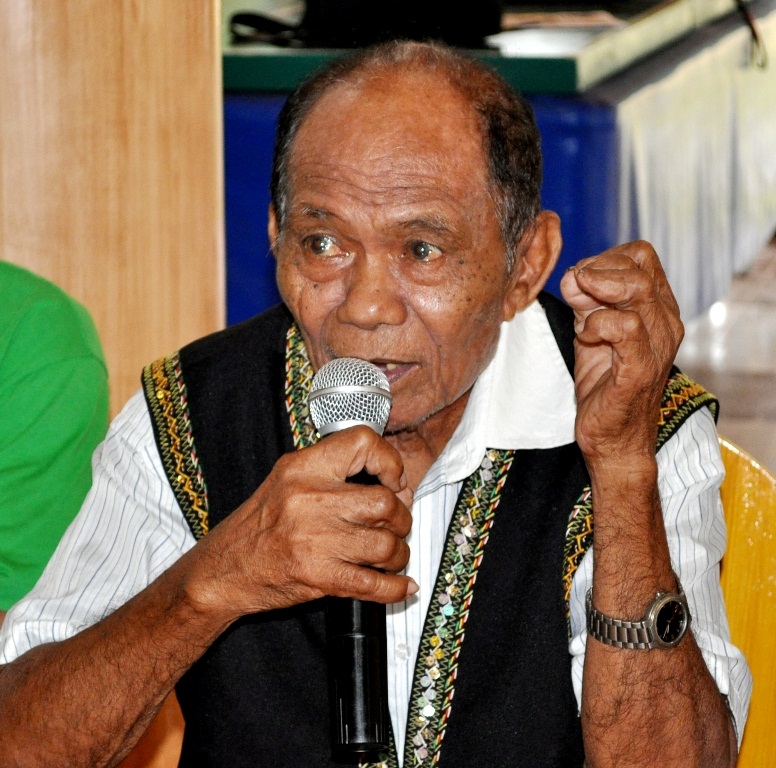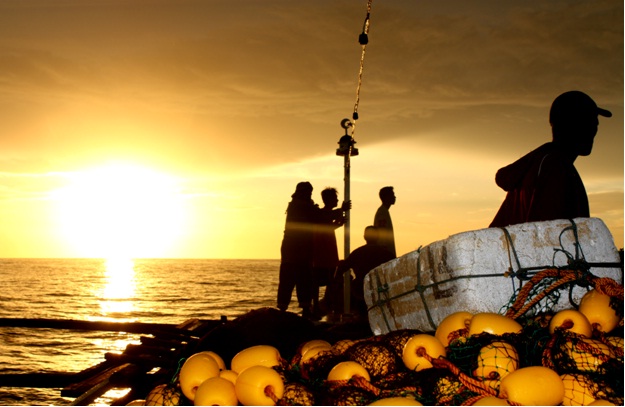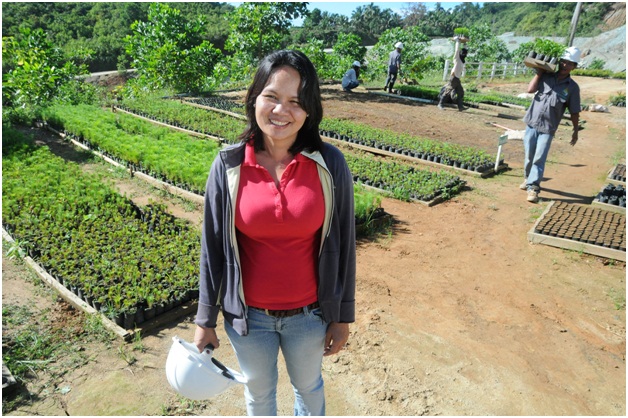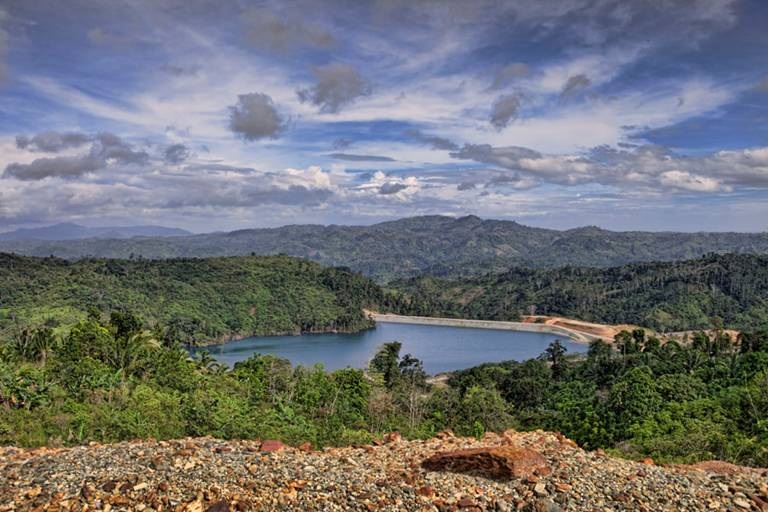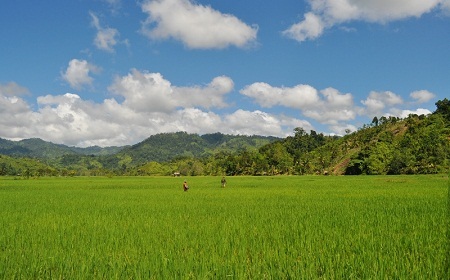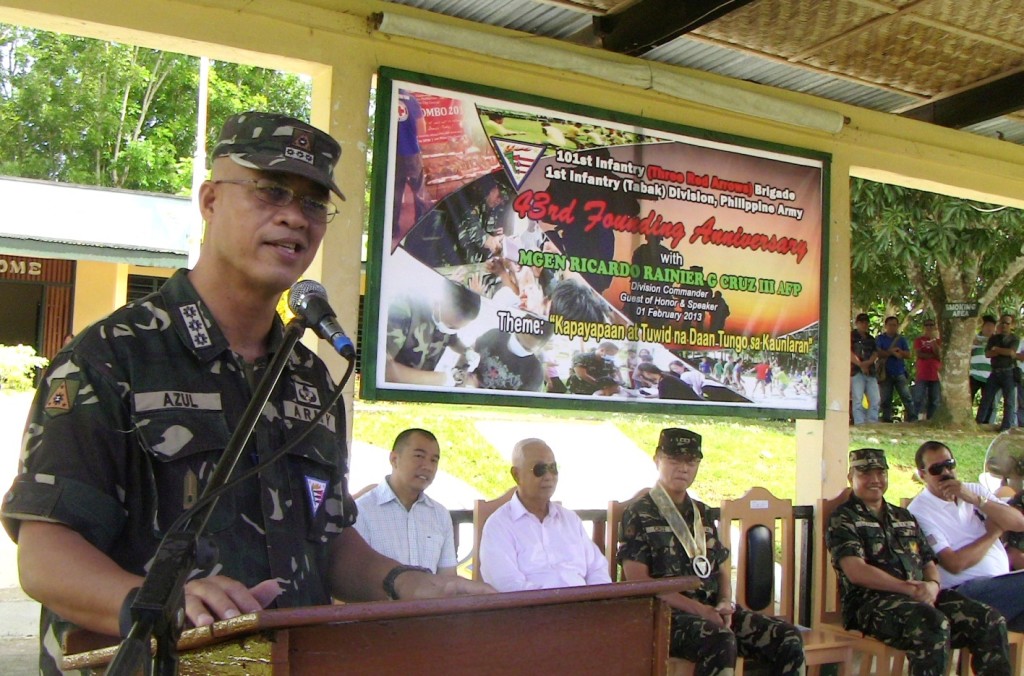IP museum and souvenir shop now open, too
The origin of the term “flea market” is difficult
to trace. It is said that the term is a literal translation of the French marché
aux puces, an outdoor bazaar (marché) in Paris named after those pesky
little parasites (puces) that infested the upholstery of old furniture brought
out for sale.
src=”https://tvird.com.ph/wp-content/uploads/content-img/070911a.jpg”>
Members of the Subanon women’s group prepare their produce
to be sold in the first-ever market day in their ancestral domain. “It’s
about time that we unite and put our acts together towards the attainment of
development.”
src=”https://tvird.com.ph/wp-content/uploads/content-img/070911b.jpg”>
ABOVE: Dewayne Chambers, TVIRD Special Projects consultant (extreme left), and fellow TVIRD employees marvel at the fresh farm products of their indigenous hosts. “A marketplace is an essential part of a community.” BELOW: TVIRD Vice President for Social Commitments Feliece Yeban (in mustard blouse), samples native fruits at the flea market. “One can really feel their pride in being able to show what they are capable of doing through cooperation as a community, and with their bare hands individually.”
src=”https://tvird.com.ph/wp-content/uploads/content-img/070911c.jpg”>
Whatever their origins may be, flea markets are, undoubtedly, the incubators
and breeding grounds of entrepreneurs that represent the free enterprise system.
Oftentimes, they are the only opportunity available for a person to start a
business without a large layout of capital and long-term commitments.
The flea market phenomenon has reached a remote mountain village in Southern
Philippines, thanks to the efforts of members of a Subanon women’s group. Recently,
they launched “Tabo sa Canatuan” their own version of market day – their very
first “since time immemorial” – in the ancestral domain of this once semi-nomadic
poverty-stricken indigenous tribe that relied mainly on slash-and-burn farming
for subsistence.
Canatuan, a county in Siocon, Zamboanga del Norte, hosts the gold and silver
operations of TVI Resource Development Philippines, Inc. (TVIRD), now in the
thick of an expansion program for the production of copper and zinc, slated
mid-2008. The Company, through its Community Relations and Development Office
(CReDO), has been implementing programs on health and sanitation, infrastructure,
education, and livelihood, all aimed at providing sustainable development to
TVIRD’s gracious hosts within and, more importantly, beyond the life of
mine.
src=”https://tvird.com.ph/wp-content/uploads/content-img/070911d.jpg”>
ABOVE: The receiving area of the new Subanon Community
Museum and Souvenir Shop. BELOW: Heirlooms and antique musical instruments form
part of the museum exhibits.
src=”https://tvird.com.ph/wp-content/uploads/content-img/070911e.jpg”>
src=”https://tvird.com.ph/wp-content/uploads/content-img/070911f.jpg”>
“Panahon na nga kitang mga kababayen-an magkahiusa aron makab-ot nato
ang malungtarong kalambuan (It’s about time that we women unite and
put our acts together towards the attainment of development,” Anabelle Combi,
president of the Siocon Subanon Women’s Association, Inc. (SSWAI), said
during the inauguration of the Tabo (flea market).
“Pinaagi niining tabo nga ipahigayon matag semana, mabaligya na nato
ang mga produkto nga dili na kinahanglan pa nga ibiyahe. Ug niini, kinahanglan
nato nga magkugi pa aron mas daghan kita nga produkto ug madugangan pa ang atong
panginabuhian (Through this weekly flea market, we do not have to transport
our products anymore so we could to sell them. We all have to be more industrious
so we’ll have more products and have additional income or livelihood),”
Combi stressed.
The flea market has since become a showcase of various local produce such as
banana, mango, lanzones, papaya, mangosteen, as well as marang and durian (tropical
fruits native to Mindanao); tuba (coconut wine) root crops and spices; upland
rice, vegetables and coconut; and native delicacies.
Also giving added significance to the Tabo launching was the opening of the
Canatuan Community Museum and Souvenir Shop, which display various Subanon artifacts
and artworks that SSWAI members crafted themselves during a visual arts workshop
they attended recently with the assistance of CReDO. A mongimunag, a blessing
ritual, was performed for the new facilities by Susana Davi, a member of the
tribal Council of Elders and the SSWAI.
src=”https://tvird.com.ph/wp-content/uploads/content-img/070911g.jpg”>
src=”https://tvird.com.ph/wp-content/uploads/content-img/070911h.jpg”>
src=”https://tvird.com.ph/wp-content/uploads/content-img/070911i.jpg”>
“The market, museum and souvenir shop clearly show these women’s realization
of their self-worth and eagerness for self-determination,“ Feliece Yeban,
TVIRD vice president for Social Commitments, said. “One can really feel
their pride in being able to show what they are capable of doing through cooperation
as a community, and with their bare hands individually.”
TVIRD Special Projects consultant Dewayne Chambers also applauded the Subanon
women for their Tabo project: “For years, I’ve always wondered why
no such activity was done here in Canatuan. A market place is an essential part
of a community. Finally, thru this flea market, Canatuan has one now.”
For his part, Odyssey Rico, TVIRD Canatuan Project Camp supervisor, pledged weekly
purchases of upland rice, fruits and vegetables to support the SSWAI’s project.“We
welcome this initiative of our Subanon hosts. Since we buy goods for our employees
on a weekly basis from markets several kilometers away, it will not only be practical
for us but also motivating for our hosts if we purchase our supplies from them.
That will help sustain their livelihood initiative,” Rico averred.
Throngs of customers, many of them employees of TVIRD, now come to purchase the
goods that these Subanon women bring from their respective farms and displayed
in makeshift stalls. Without having to turn their backs on their culture and traditions,
the Subanons, it seems, have embraced modern times.
As an American author put it: “Today’s flea market is a modern version of
a phenomenon that has endured throughout history in all civilized societies –
wherever there is a high concentration of people, there will be market days when
they assemble for the exchange of goods and services.“ The marketplace of
the ancient Greeks was known as the Agora; in Rome, the Forum; and in Israel,
the Temples. Each nation has its own name that translates into flea market. The
Subanon nation has just contributed theirs to list of names.

